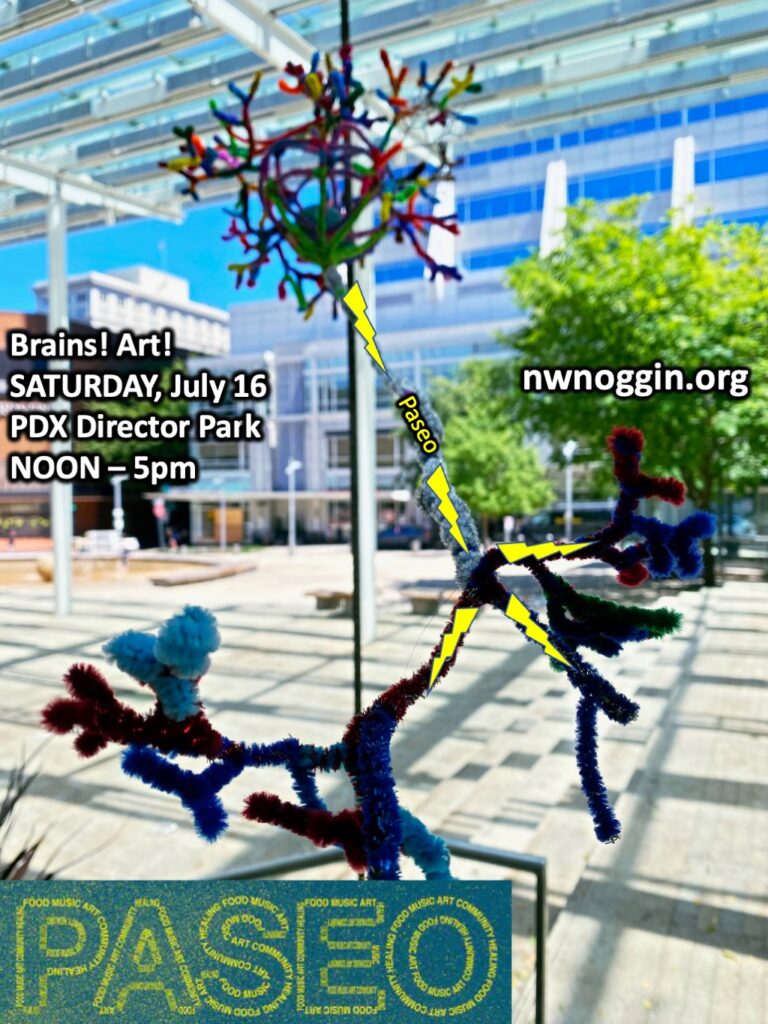
“Walkers are ‘practitioners of the city,’ for the city is made to be walked. A city is a language, a repository of possibilities, and walking is the act of speaking that language, of selecting from those possibilities.”
— Rebecca Solnit
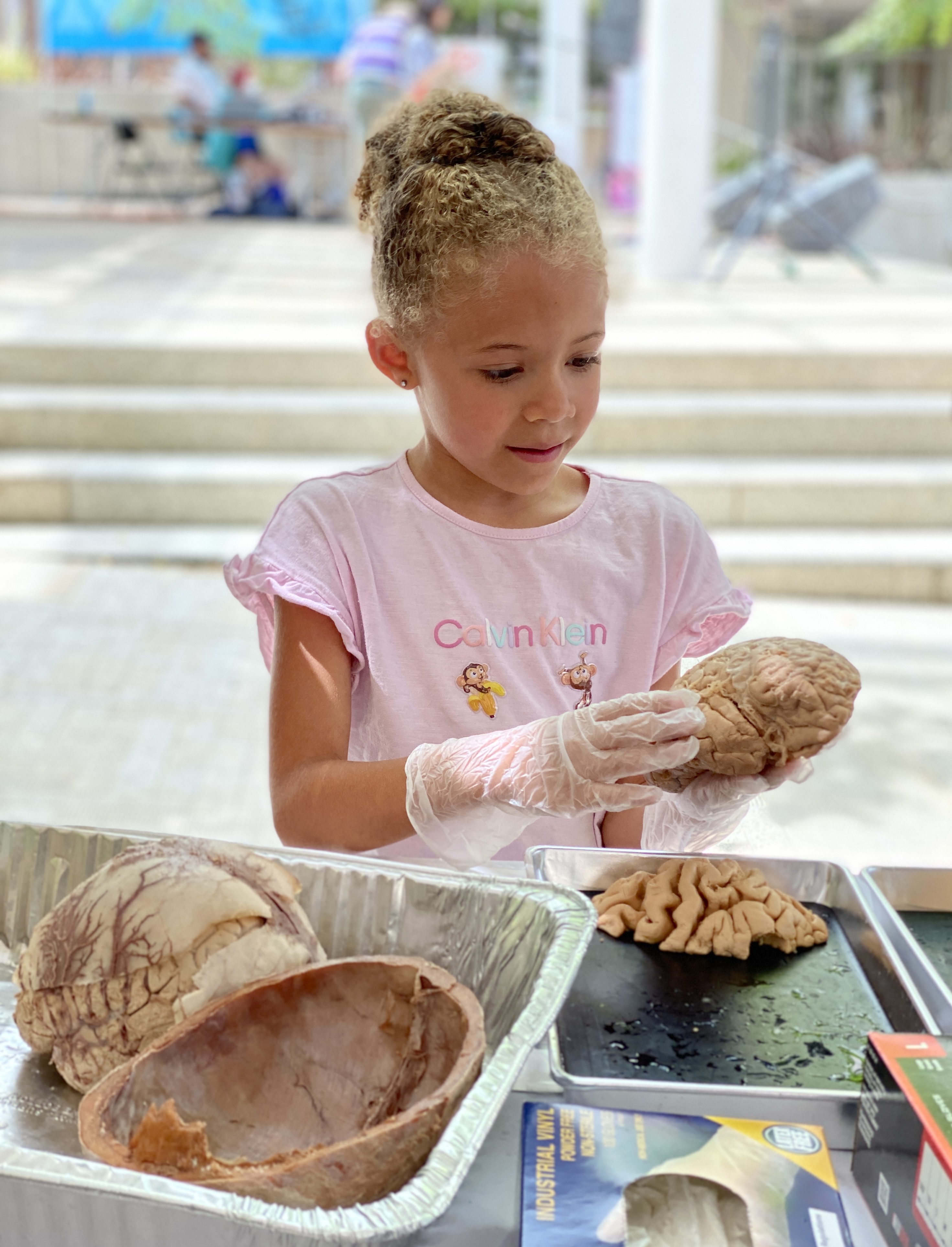
Paseo in Portland
A paseo is a leisurely walk through a city, often in the evening, along tree-lined streets and parks. Portland, Oregon is blessed with extraordinary public green spaces, including the forested South Park Blocks that lead to the Portland State University (PSU) campus, where many of our Noggin volunteers learn about art, psychology, interdisciplinary neuroscience, outreach and the brain!
LEARN MORE: Noggin @ Portland State University
LEARN MORE: Interdisciplinary Neuroscience Minor @ PSU
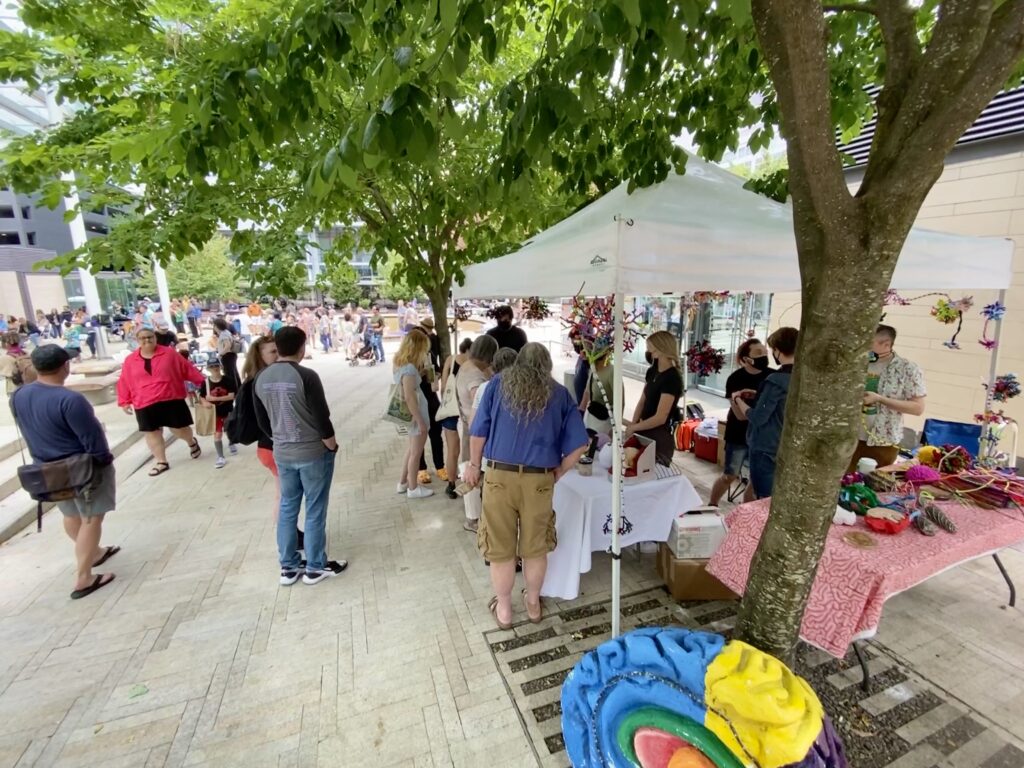
An Engaged City
Portland is a city of walkers, and also home to many people passionate about art, music, the environment, civil rights, democracy and evidence-based research during times of dramatic political and ecological crisis. Portlanders march for science, reproductive freedom, voting rights, women’s right and Black lives.
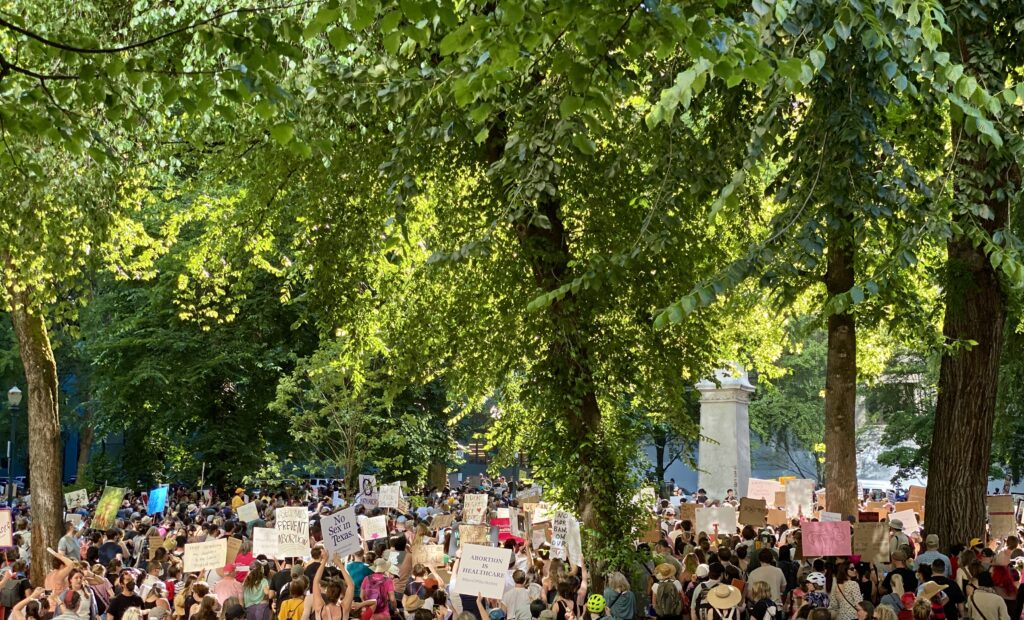
Portland also became a target of white Christian nationalist violence, with former Acting Homeland Security Director Chad Wolf collaborating with the Portland Police, as well as the Proud Boys and other rightwing organizations that engage in terrorist violence in the US.
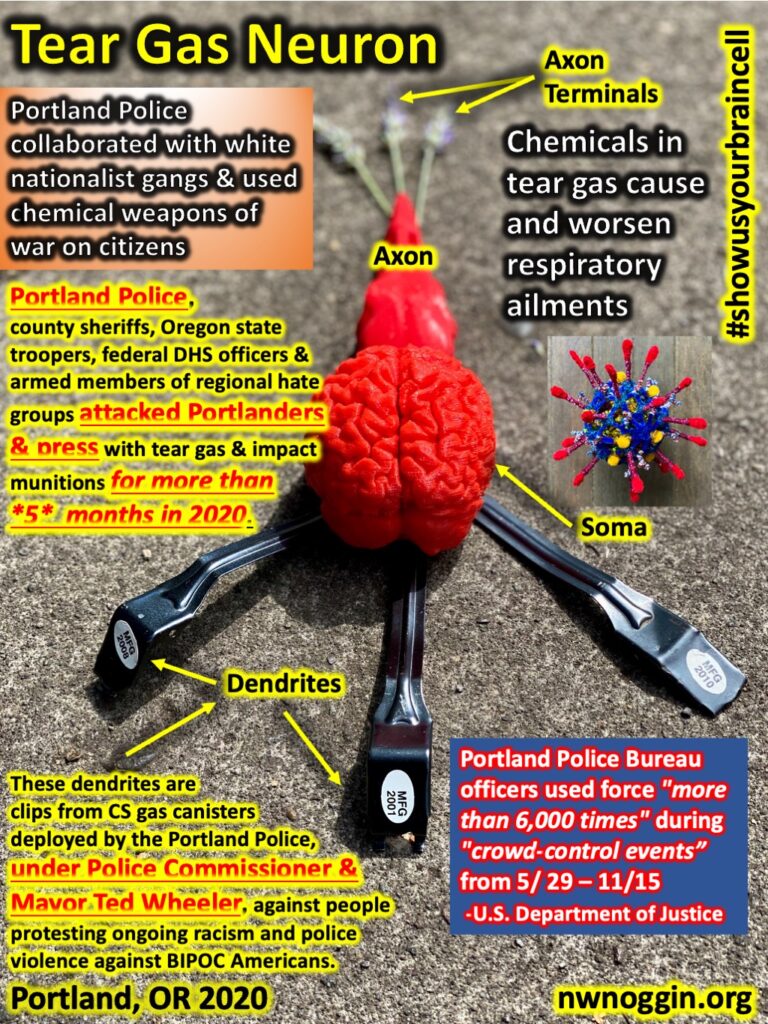
LEARN MORE: How Oregon was a testing ground for Jan. 6 attack on U.S. Capitol
LEARN MORE: Portland police investigation clears officer who joined Oath Keepers militia
LEARN MORE: After Portland police used force 6,000 times, federal attorneys crack down
LEARN MORE: Report blames Portland police for protest violence
LEARN MORE: Clash With Local Authorities as Feds Continue to Advance on Portland Protesters
LEARN MORE: Portland police and far-right leader had friendly relationship, texts reveal
LEARN MORE: PROUD BOYS (Southern Poverty Law Center)
LEARN MORE: Portland Police Used a Proud Boy Meme in Their Training Materials
LEARN MORE: Portland’s Bizarre Experiment With Not Policing Proud Boys Rampage Ends in Gunfire
LEARN MORE: Portland police stand by as Proud Boys and far-right militias flash guns and brawl
LEARN MORE: New Zealand’s government classifies the Proud Boys as a terrorist organization
LEARN MORE: Jan. 6 Committee Details Proud Boys, Oath Keepers Involvement in Capitol Insurrection
LEARN MORE: Christian Nationalism and Political Violence
LEARN MORE: Christian Nationalism and COVID-19 Vaccine Hesitancy and Uptake
LEARN MORE: The Chaotic Image of Portland Peddled on Fox News Has Prevailed
LEARN MORE: Governor candidate Betsy Johnson calls Portland ‘city of roaches’
City of Joyous and Resilient Brains
Yet despite these assaults and efforts to dehumanize Portlanders, our city thrives.

This July the Portland Parks Foundation invited Northwest Noggin to join their own Paseo, a free, vibrant, three day festival and community summer gathering celebrating the arts and mutual aid in the heart of downtown. Paseo featured music, dance, spoken word, art – and BRAINS!
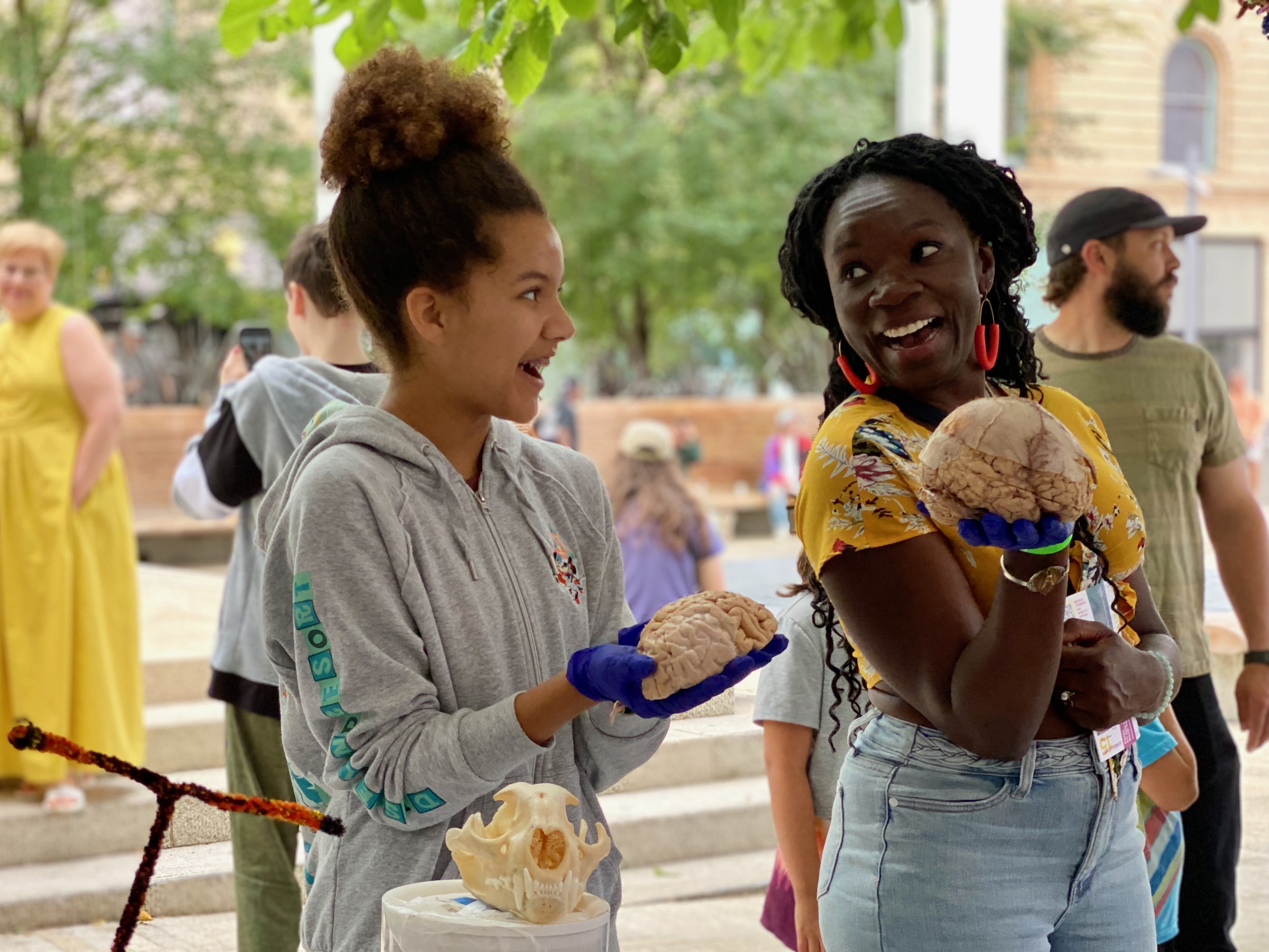
LEARN MORE: What to see at Portland’s new festival of arts and grassroots mutual aid
We brought a masked, vaxxed crowd of accomplished interdisciplinary outreach volunteers to Director Park, including Kanani Miyamoto from Noggin and PNCA, Brooke Searle, Quinn Westlynd, Kaya Burd, Kierra Rogers, Kassidy Fitzgerald and Amanda Ngo from PSU, Ben Bolen from the PSU Neuroscience Club, Bradley Marxmiller, a BUILD EXITO scholar at PSU and Oregon Health & Science University (OHSU), Randall Olson, a graduate student in Behavioral Neuroscience from OHSU, and Julian Gamez, a McNair scholar studying Neuroscience at the University of Oregon!
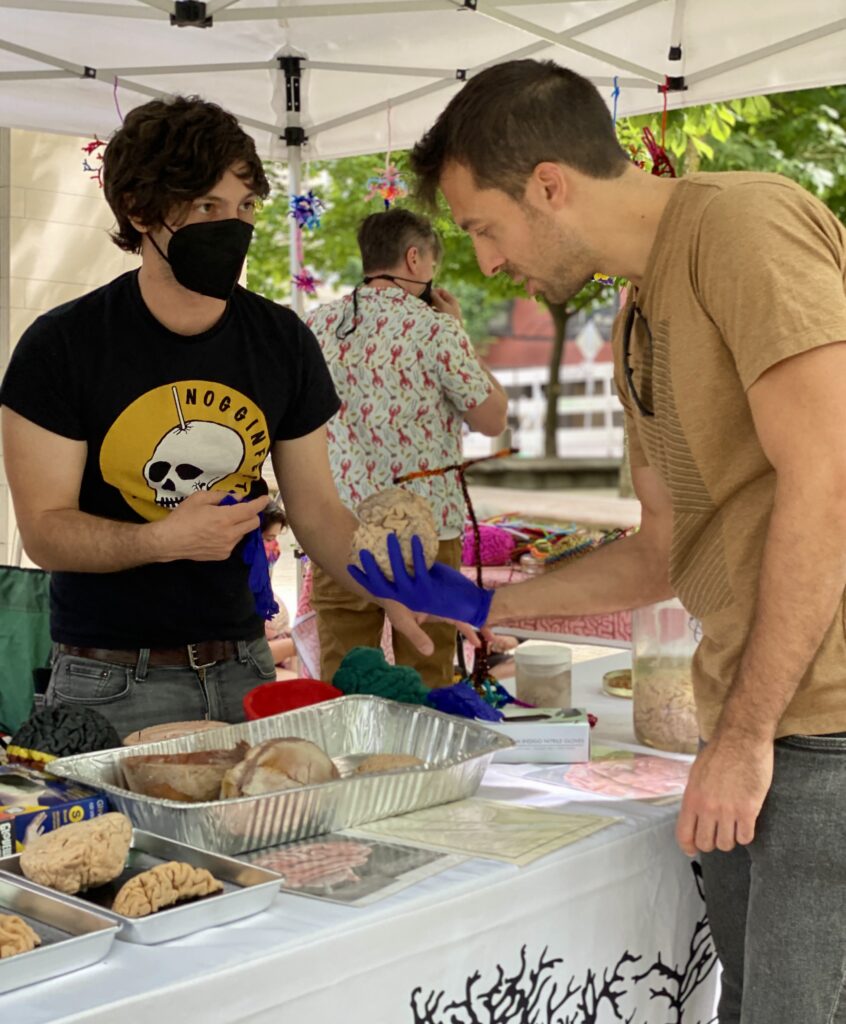
So many wonderful questions!
LEARN MORE: Human brain changes across the life span
LEARN MORE: Neurodevelopmental origins of lifespan changes in brain and cognition
LEARN MORE: Parkinson’s Disease: Causes, Symptoms, and Treatments
LEARN MORE: Recent advances in understanding the role of the basal ganglia
LEARN MORE: Adventure A-Head
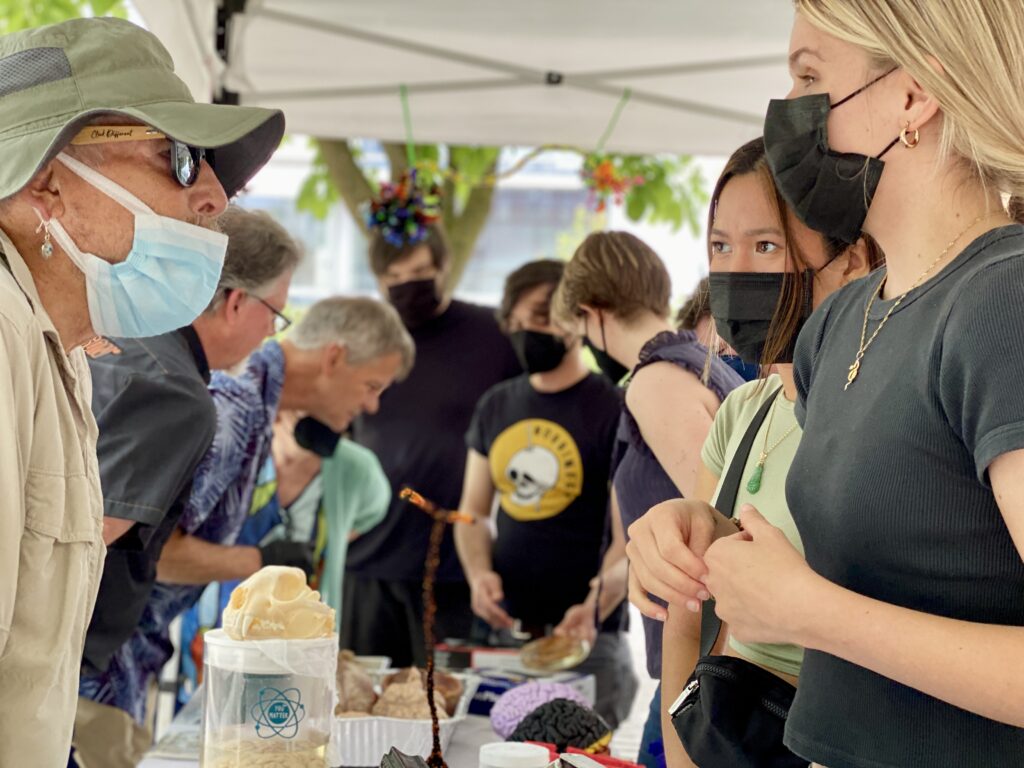
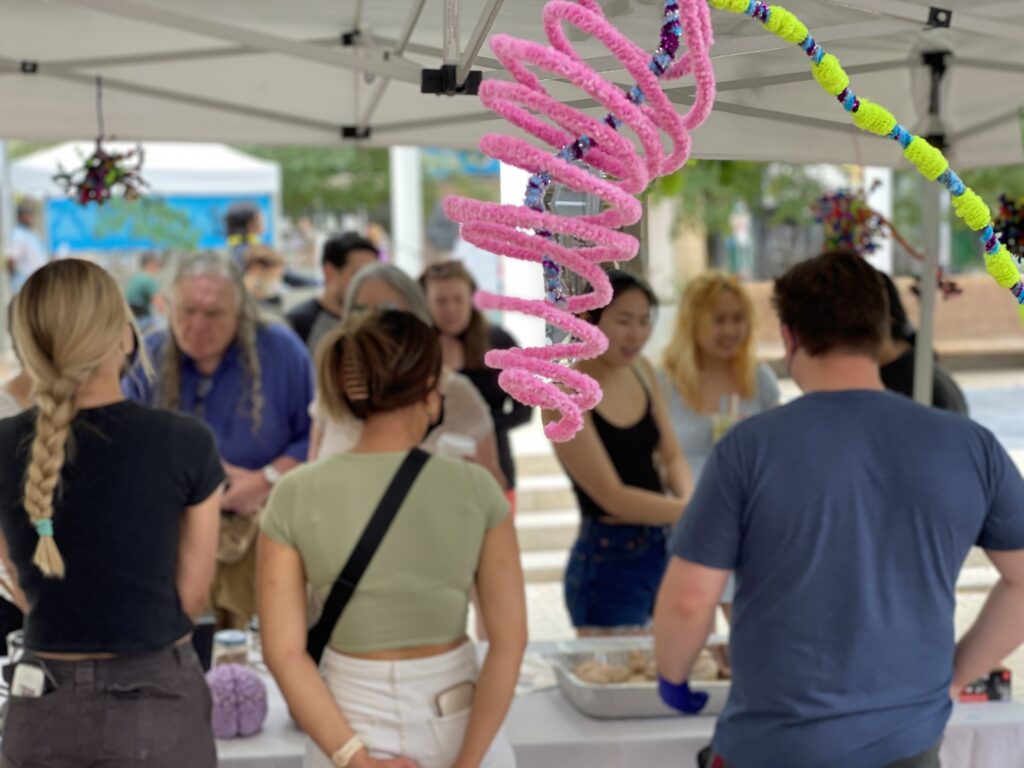
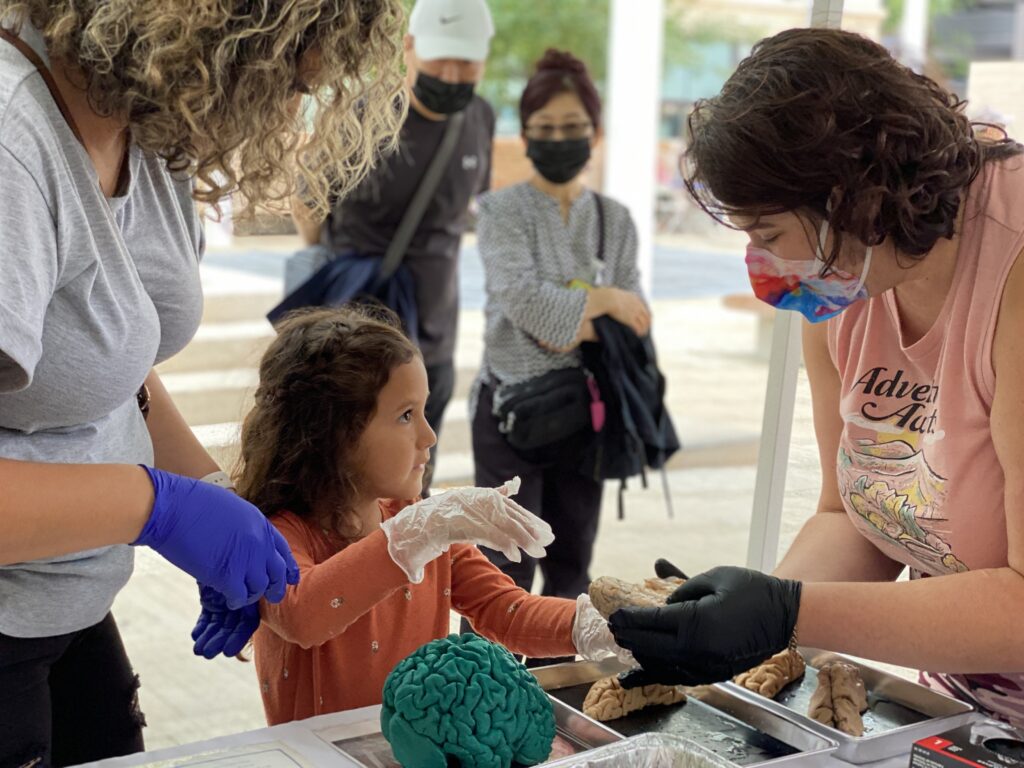
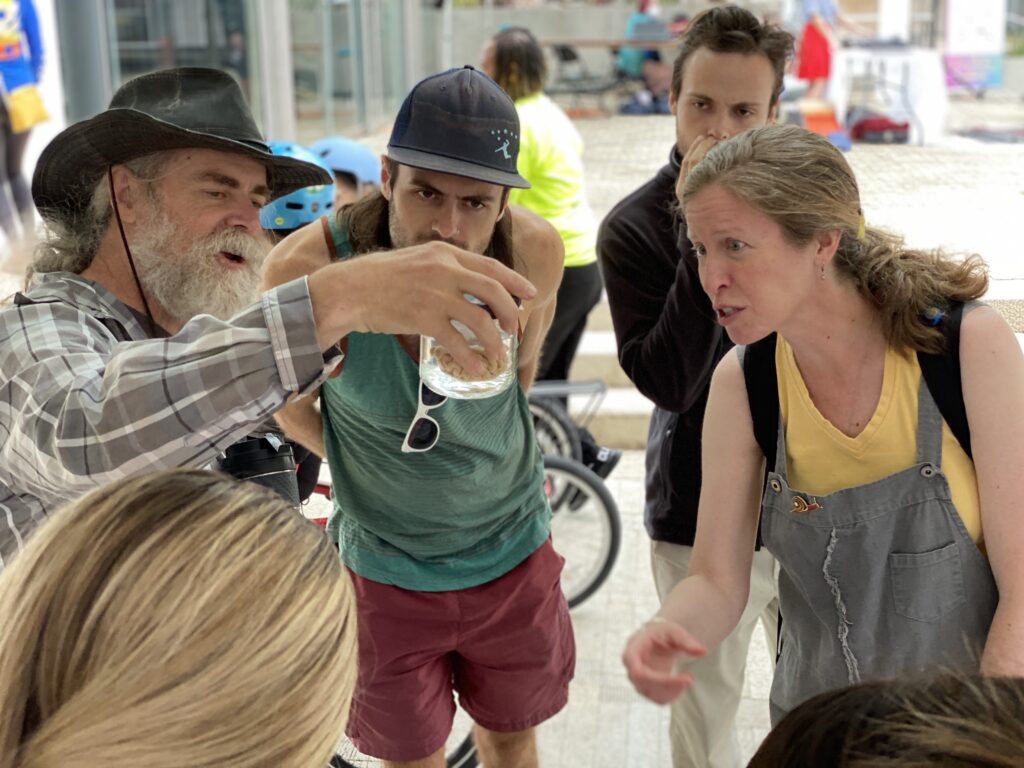
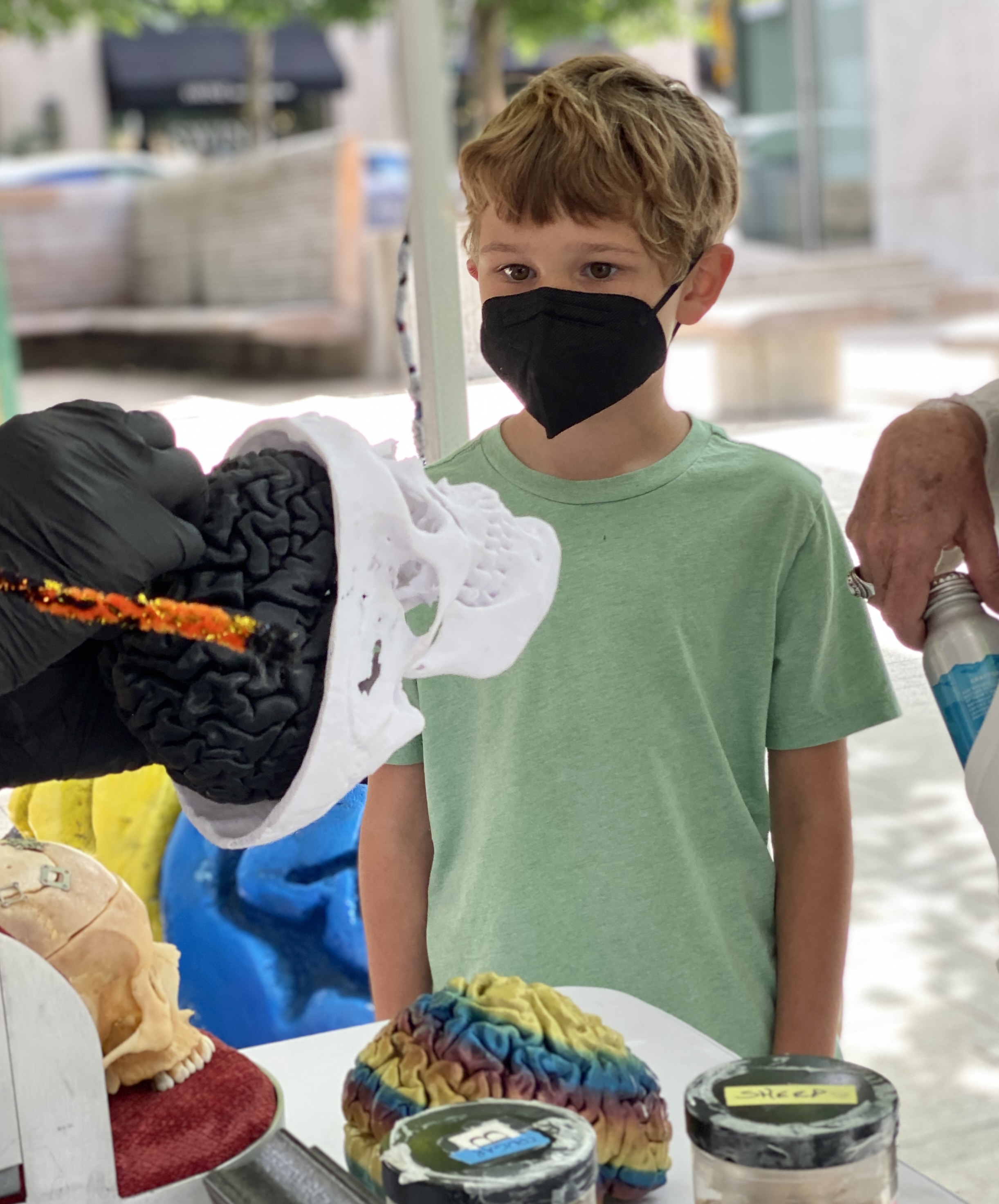
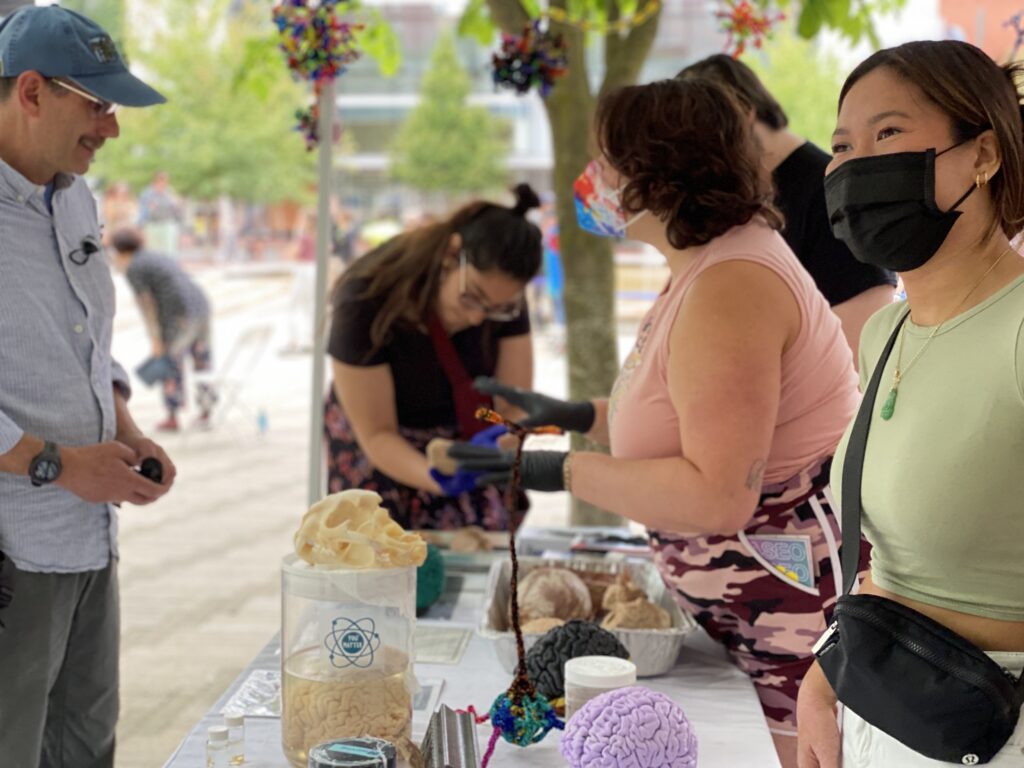
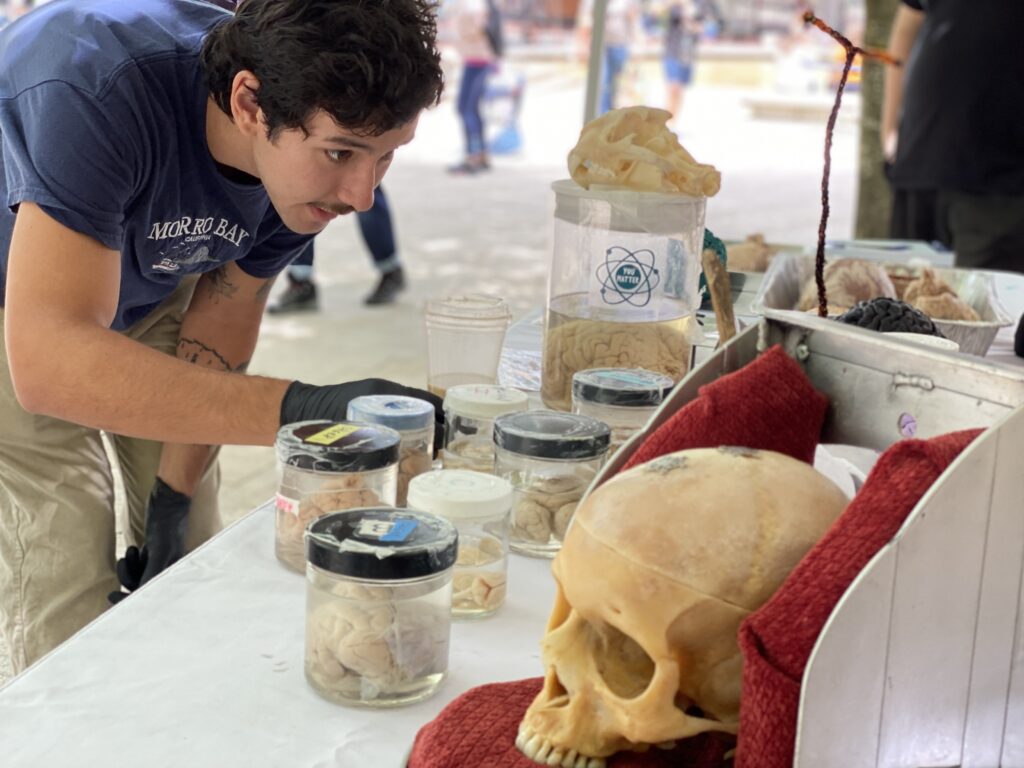
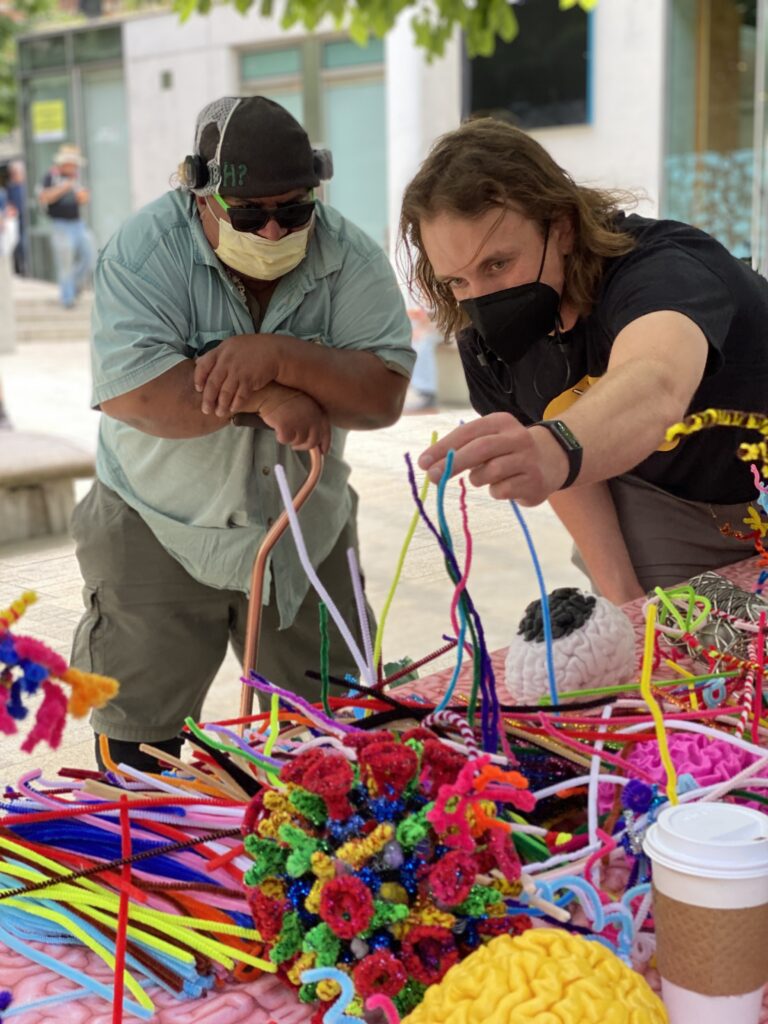
What does it mean when you say our brain is ‘plastic’?
“Will it make me something? Will I be something? Am I something? And the answer comes, already am, always was, and I still have time to be.”
― Anis Mojgani, Poet Laureate of Oregon
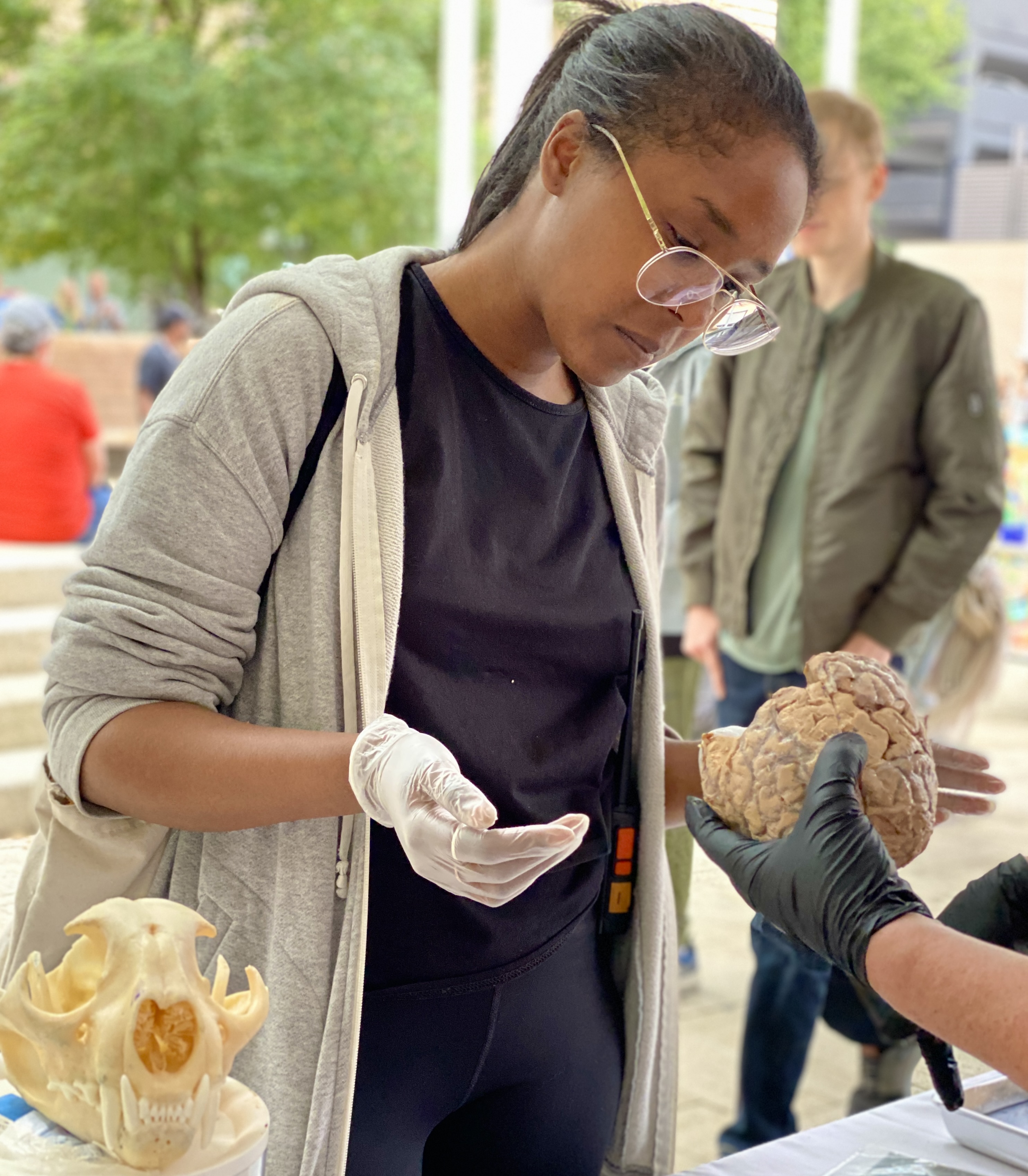
Plastic may be a hard or brittle substance, but plasticity refers to our brain’s remarkable ability to alter its own structure and change.
“Practice leads to improvement in and refinement of performance on motor – or any other – tasks and this dynamic behavioral process is associated with altered brain activity, occurring in a similar manner in young and older adults…practice also induces structural changes, such as alterations in regional brain grey and white matter structures that are typically recruited during task performance.”
LEARN MORE: Aging and brain plasticity
LEARN MORE: The Impact of Studying Brain Plasticity
LEARN MORE: Exercising Your Brain: A Review of Human Brain Plasticity
Our billions of wire-like neurons connect at trillions of gaps known as synapses, where messages are sent via the release and receipt of chemicals known as neurotransmitters. These synapses can become more fixed as sugar and protein scaffolding known as the peri-neuronal net (PNN) accumulates, helping to maintain and perpetuate specific connections, restricting structural and functional change.

LEARN MORE: Perineuronal Nets and Their Role in Synaptic Homeostasis
LEARN MORE: Perineuronal Nets: Plasticity, Protection, and Therapeutic Potential
LEARN MORE: Casting a Wide Net: Role of Perineuronal Nets in Neural Plasticity
LEARN MORE: Structural and Functional Modulation of Perineuronal Nets
We need plasticity to meet the challenges of our time
Without plasticity, we get perseverating brains. Our neural networks remain more fixed and biased in response to experience, even in the face of dramatically changing circumstances.
Circumstances are changing. Our brains need to change too.
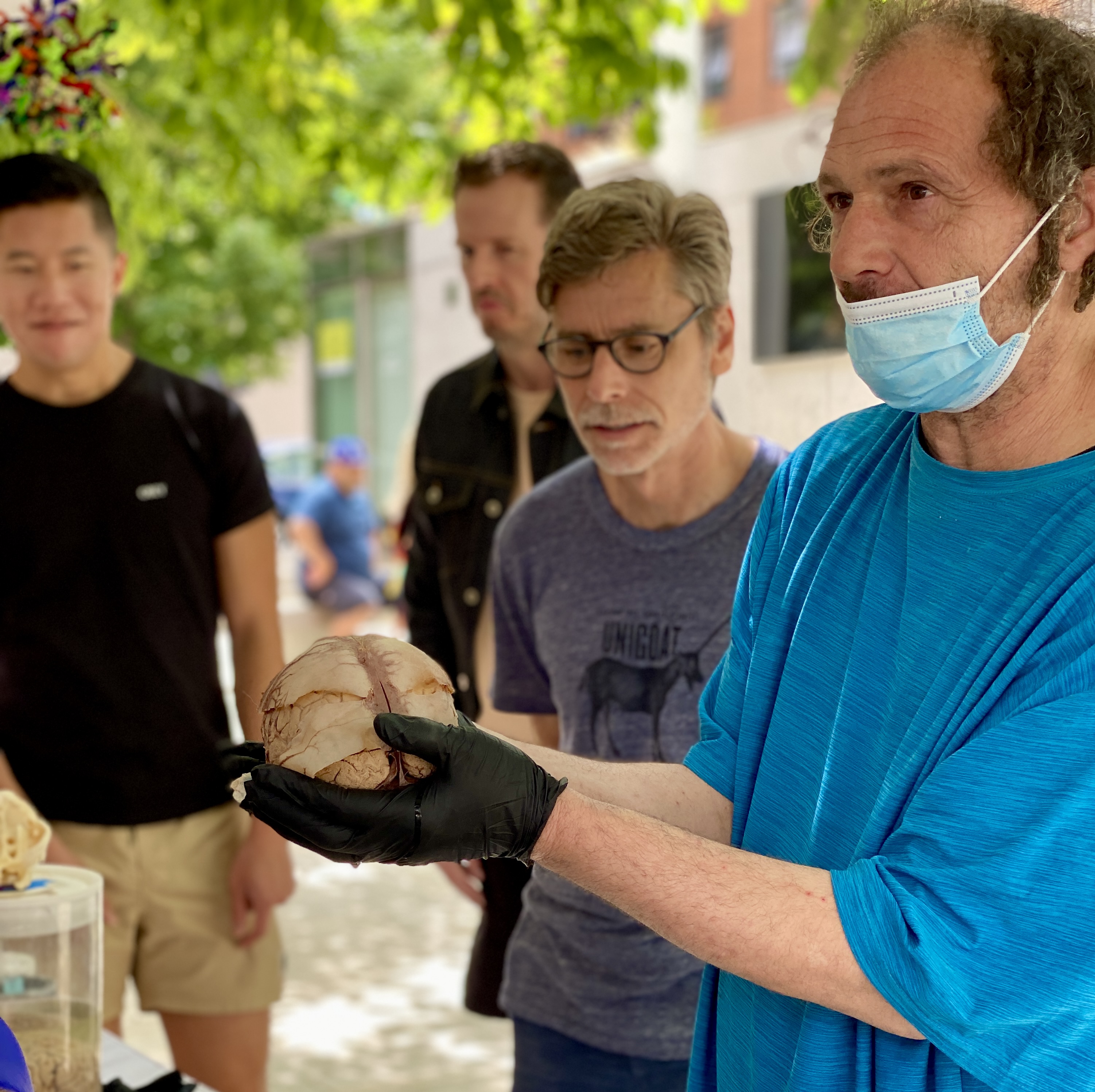
And wonder, going places, exploration and novelty can boost our brain’s engagement and improve attention and memory, bringing us into the present moment to share, listen and learn new things. These experiences can increase plasticity, alter our PNNs, re-wire our trillions of synapses and potentially change our understanding, awareness, behavior, approaches and ideas.
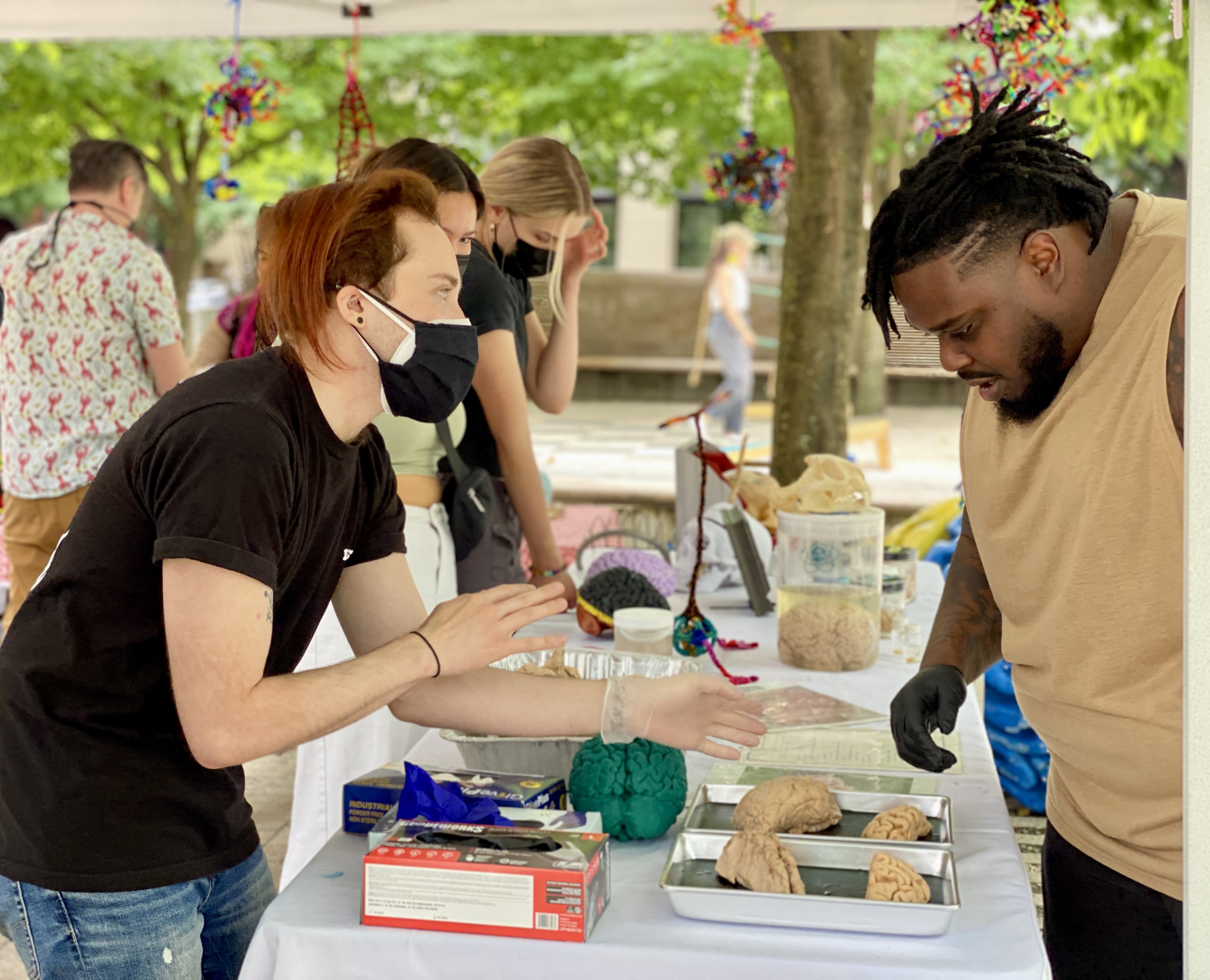
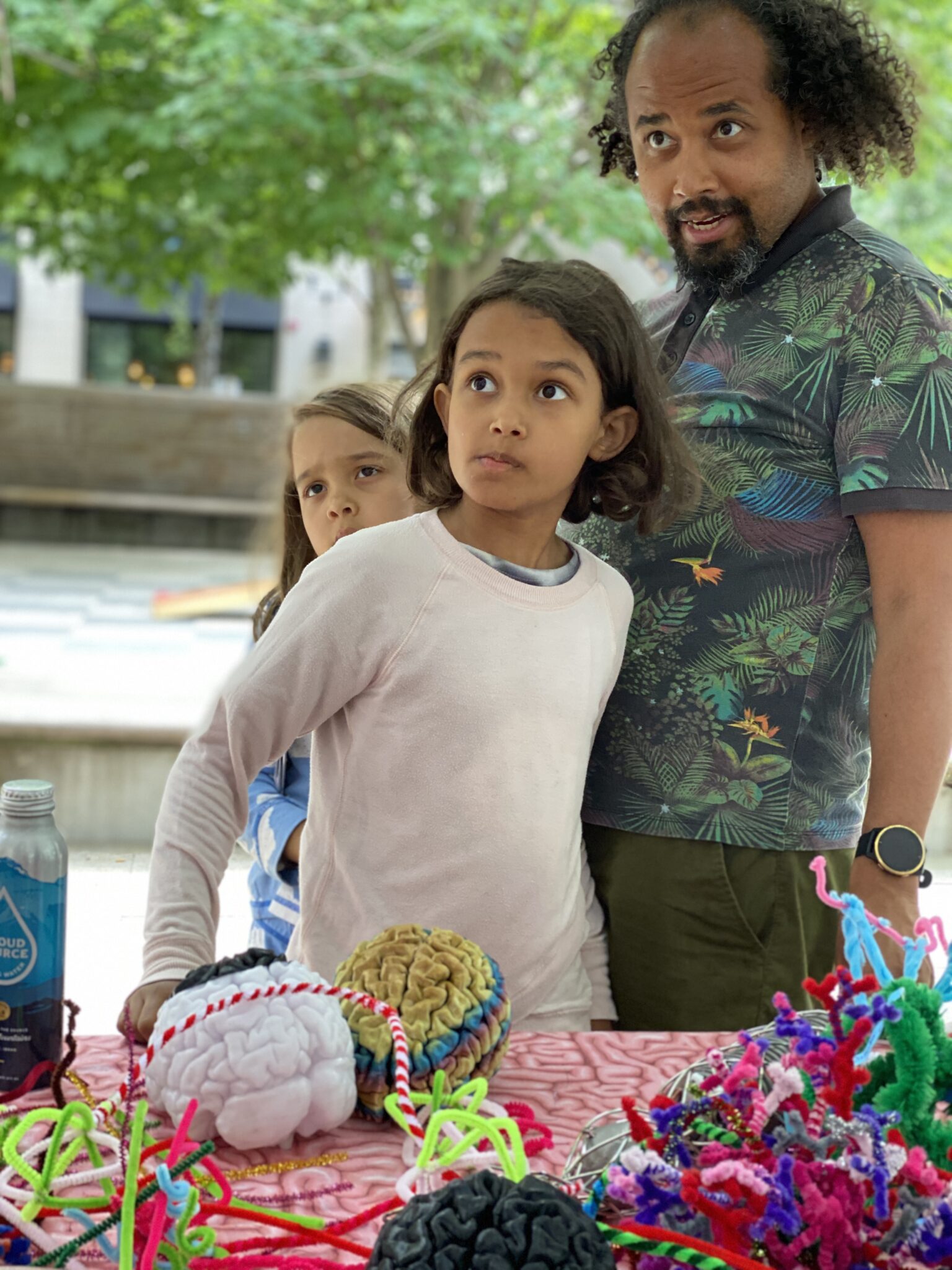
LEARN MORE: How novelty boosts memory retention
LEARN MORE: How do memory systems detect and respond to novelty?
LEARN MORE: New experiences enhance learning by resetting key brain circuit
LEARN MORE: Novelty Improves the Formation and Persistence of Memory
LEARN MORE: Novelty and Dopaminergic Modulation of Memory Persistence
Brains, art, music, walking, community engagement and care all provide spontaneous, joyous, memorable opportunities to be surprised, included and inspired. We spent Saturday afternoon hearing from Portlanders and many visitors excited to connect and discover new things in a beautiful city.
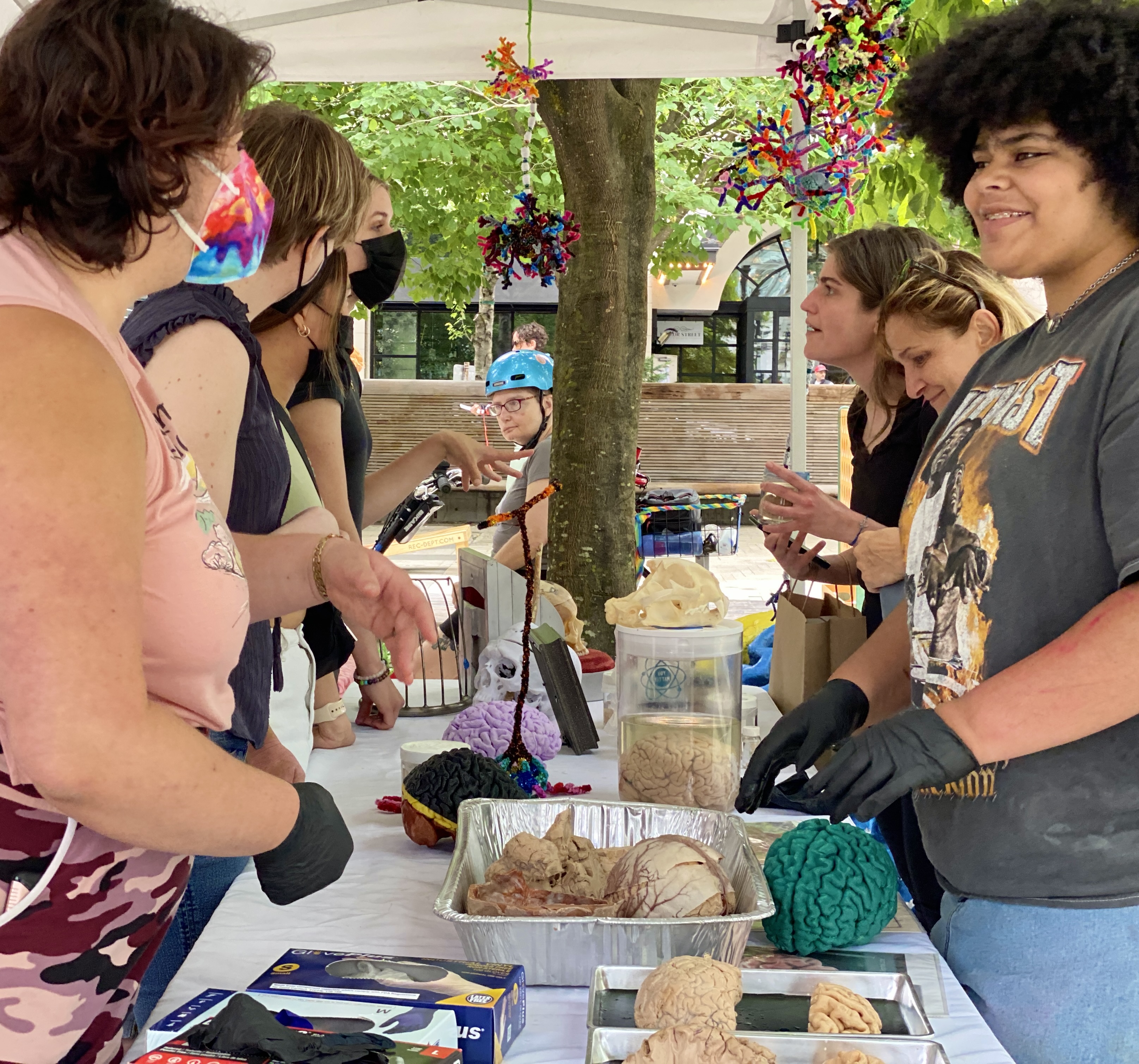
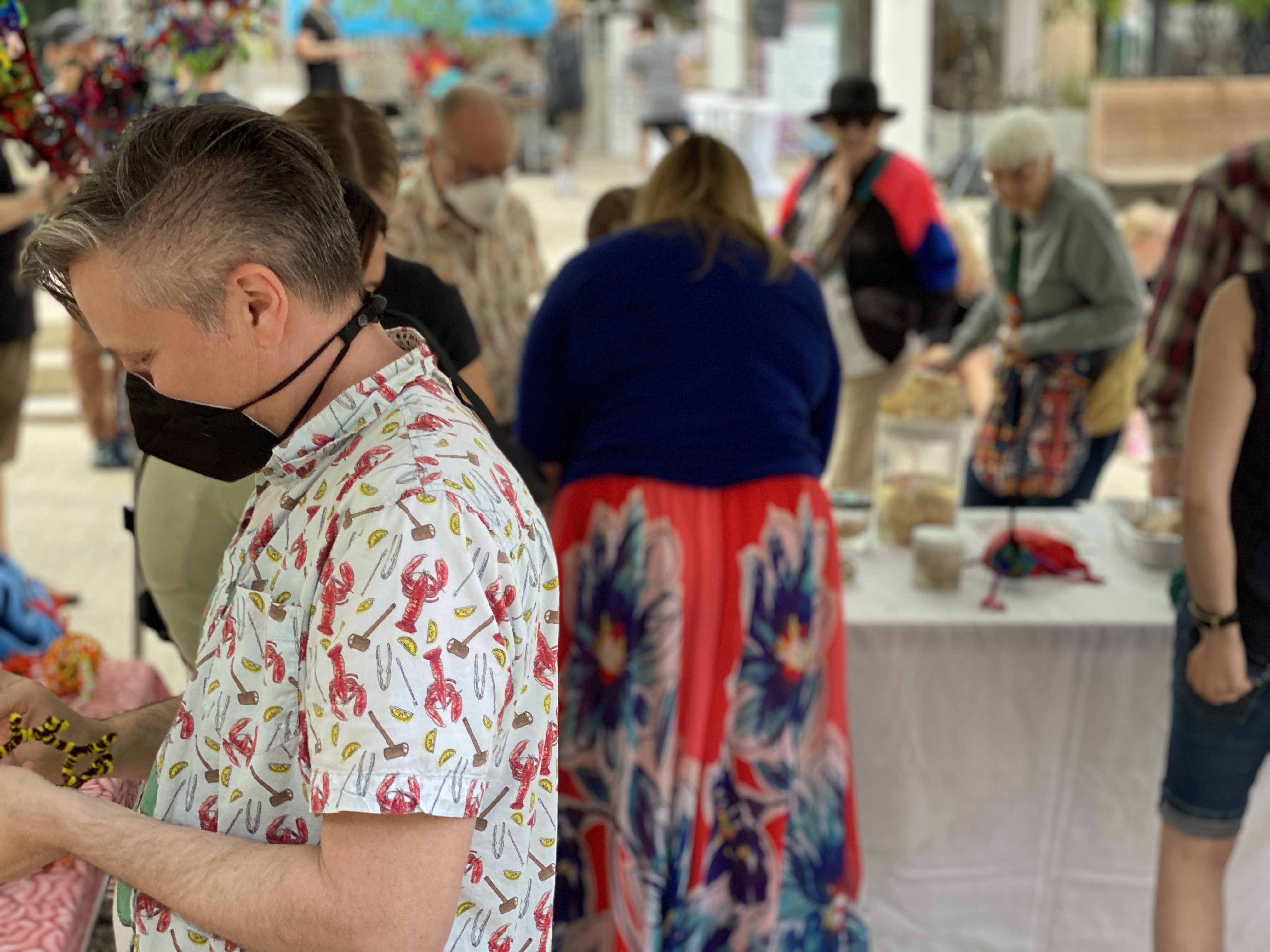
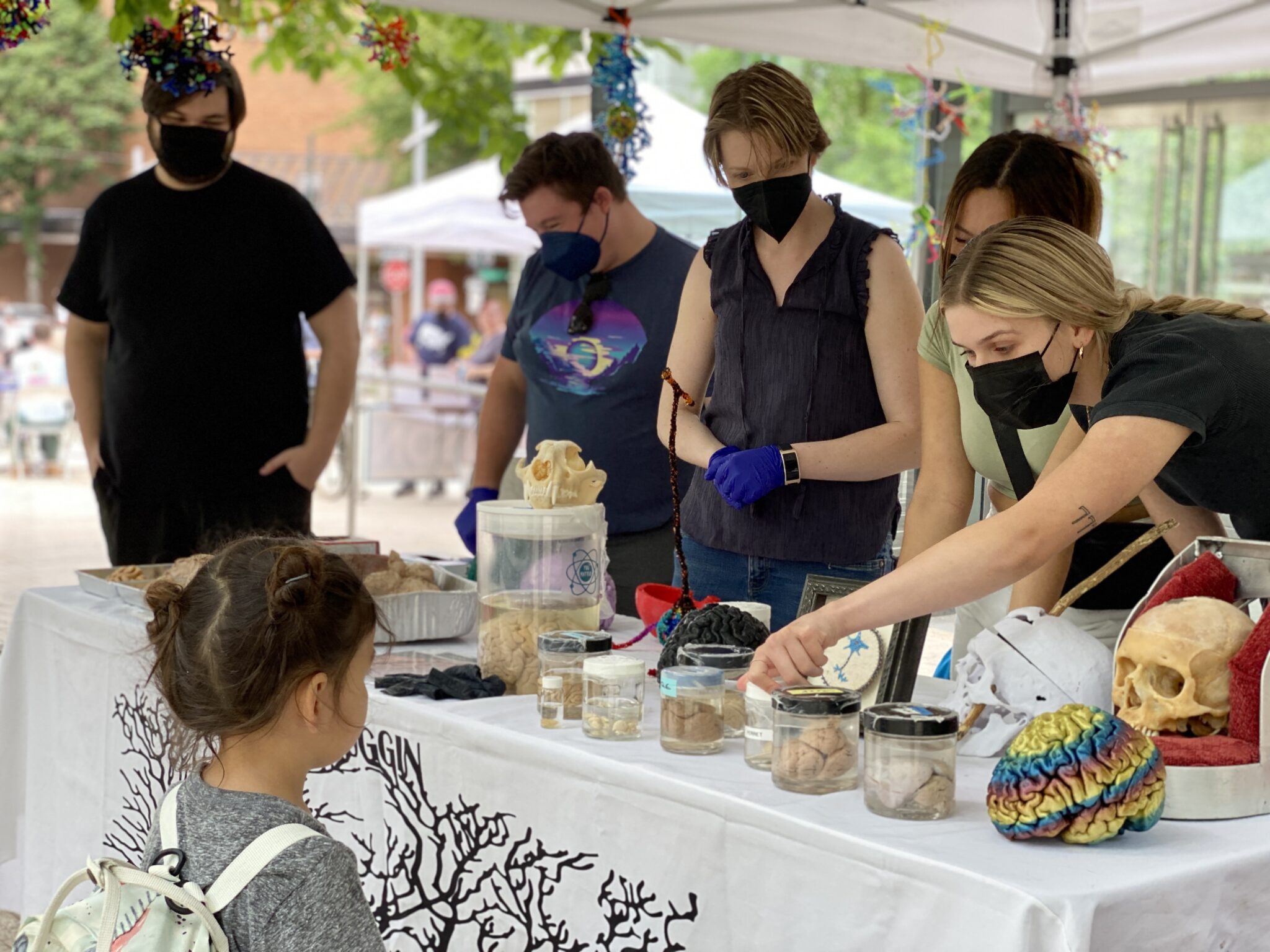
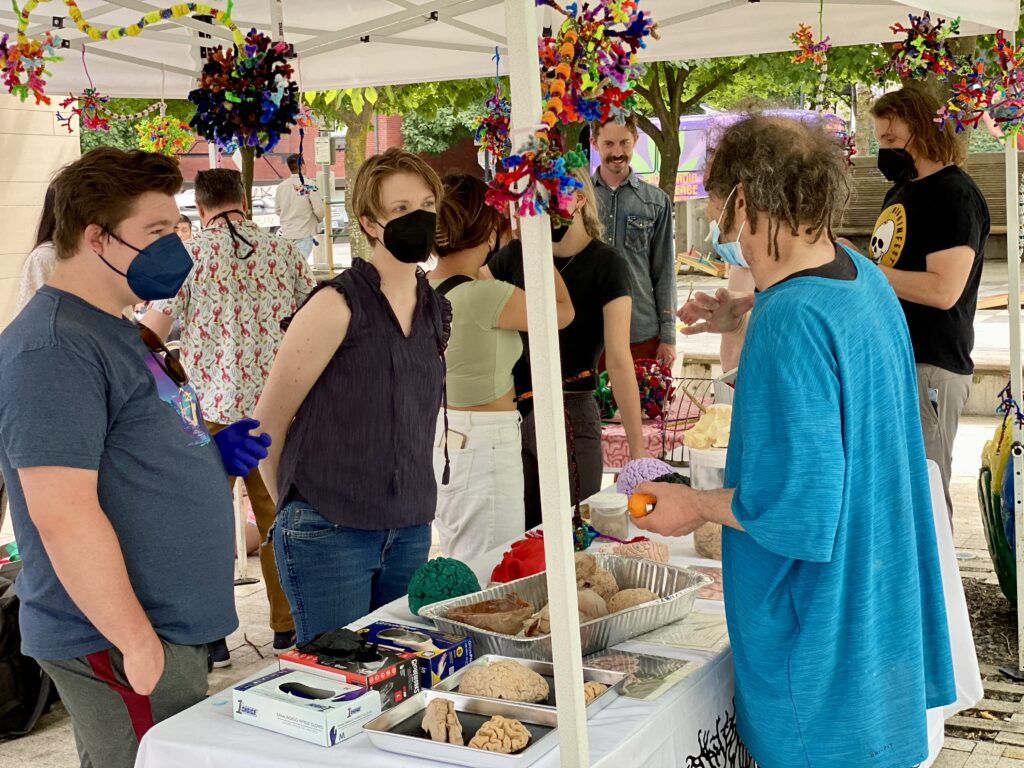

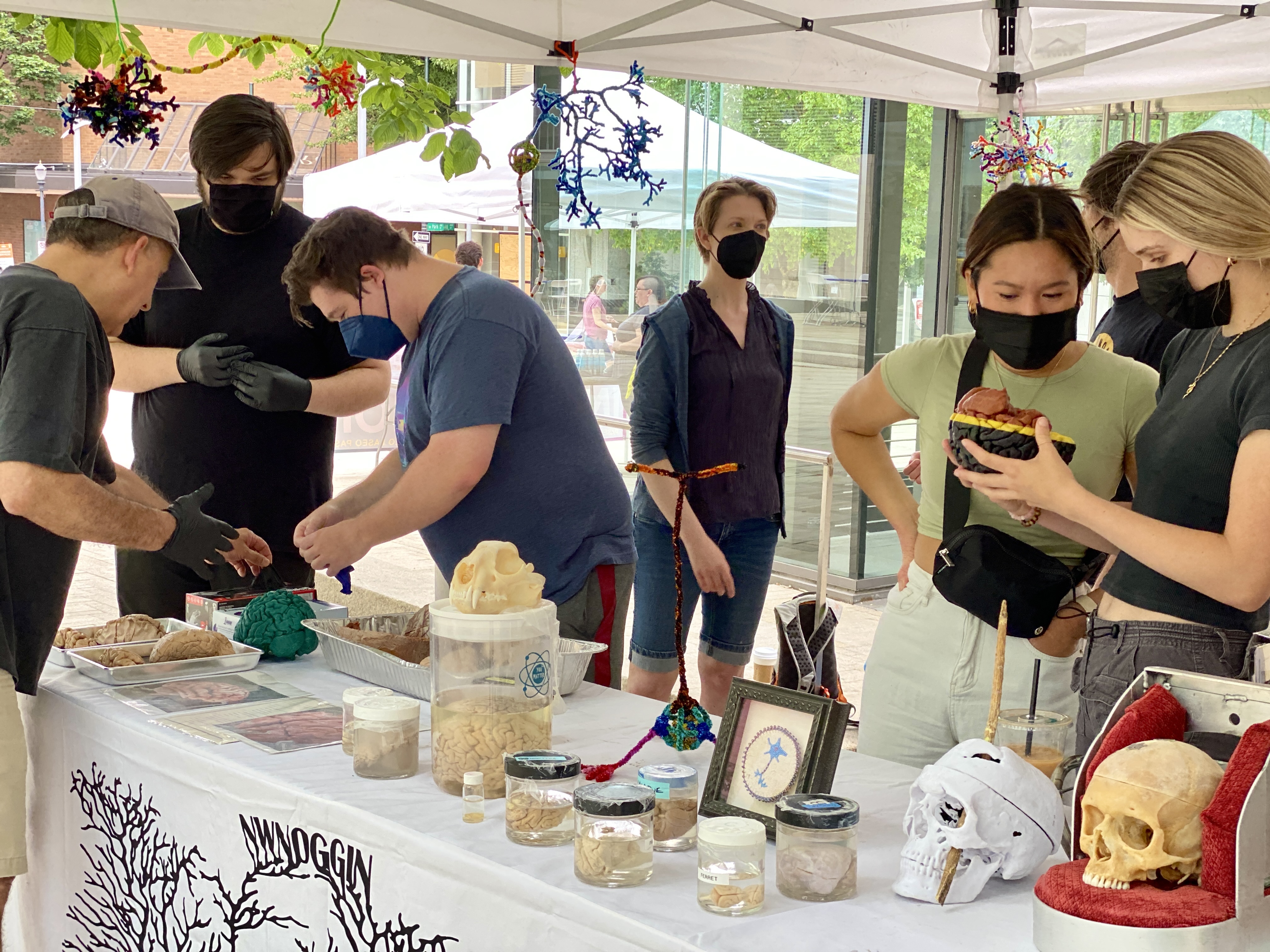
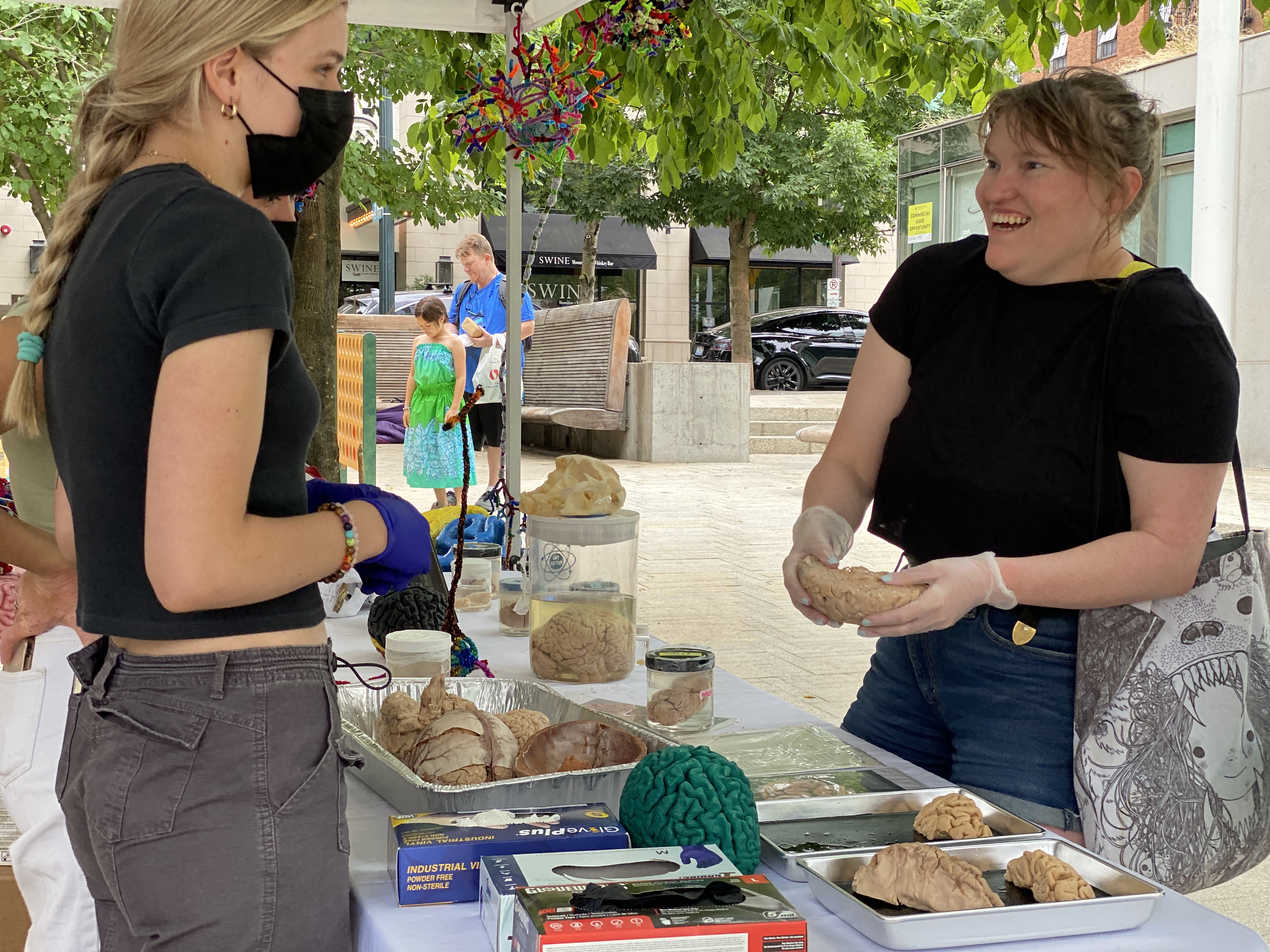
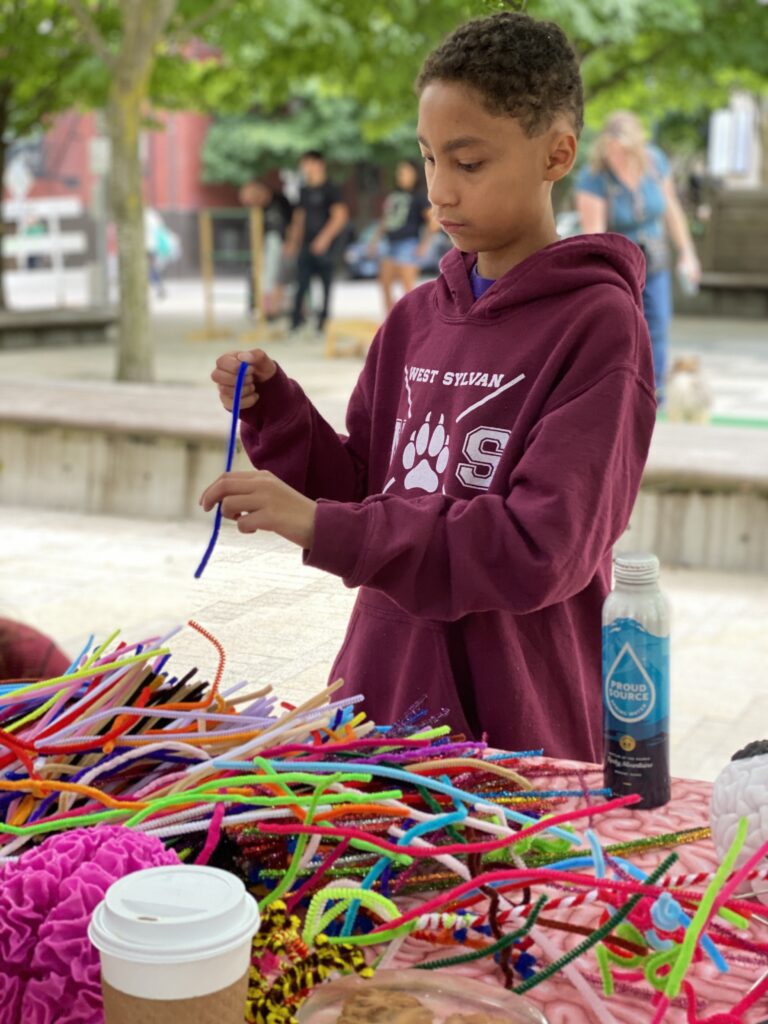
Huge thanks to Tai Carpenter of Don’t Shoot Portland and the Community Organizing Consultant for Paseo, and the Portland Parks Foundation – and to all our extraordinary Noggin volunteers for sharing your insights, enthusiasm and expertise with your Portland area community.


